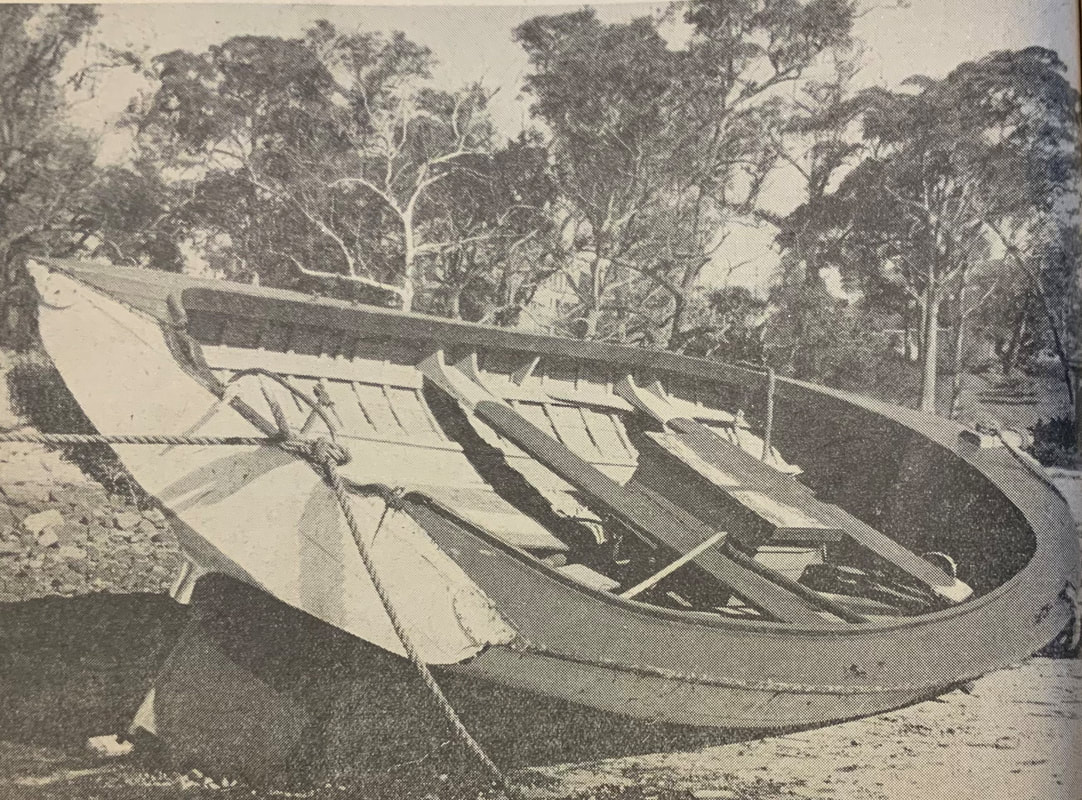There were a heap of 18-footers built. Robin Elliott (Galloping Ghosts 2012) lists about 370 18-footers built between 1880 and 1954. There may have been even more 16-footers. I have records of fifty-four 22-footers built, fifty 24-footers and twenty-two 20-footers and there are certainly more to be found. Add in the 14’s, 12’s, 10’s, 8’s and 6’s plus the nineteenth century 22’, 19’ and 16’ skiffs it adds up to a lot of boats built. Where did they all go?
An unidentified 18-footer pictured in an article in Seacraft Magazine, November 1956, on how easy it was to buy old skiffs for conversion to launches.
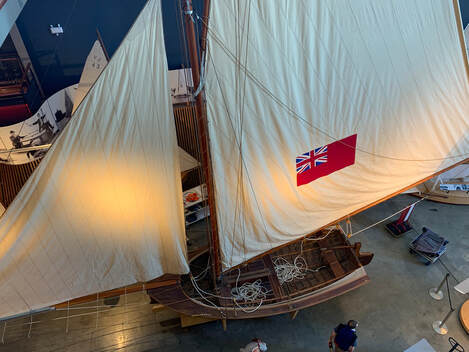
Left: Britannia on display at Wharf 7 Darling Harbour. Photo Ian Smith.
Well we know that many were turned into launches (including most of Charlie Dunn’s Crescents which were sold to fisherman at Crescent Head where Dunn had connections) but most probably didn’t last too long. We do know of several that survived and have been restored: Britannia (1919) survived as a launch and then was restored to display condition and has been on display at the Australian National Maritime Museum since 1990 and can still be seen in the foyer of Wharf 7 Darling Harbour. Yendys (1925) also survived as a launch and was restored in the early 1980’s at Cockatoo Island Dockyard and is now on display alongside Britannia at Wharf 7. Mele Bilo II (1922) also survived as a launch and was restored for display at the Fremantle Maritime Museum. More details of these restorations is in the Appendices of The Open Boat book (see the Books Page).

Right: Britannia as a launch in 1962. Photo Gil Wahlquist.
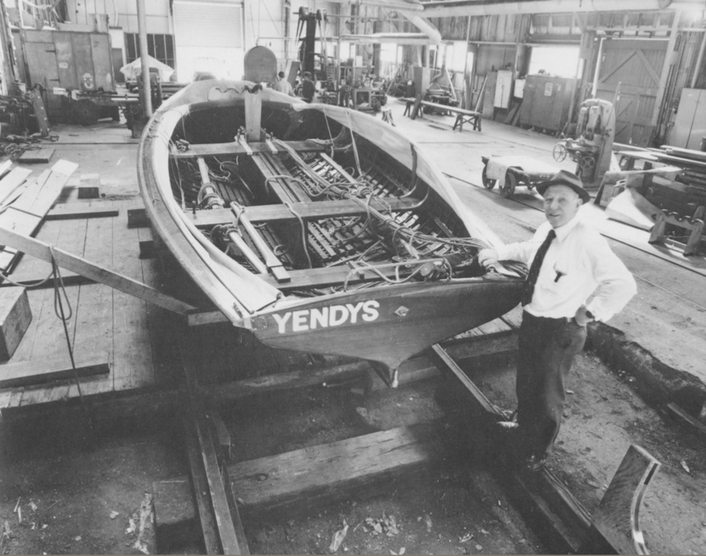
George McGoogan organised the restoration of Yendys at Cockatoo Island Dockyard in the early 1980’s. Photo David Liddle. Yendys is now on display near Britannia at Wharf 7 Darling Harbour.
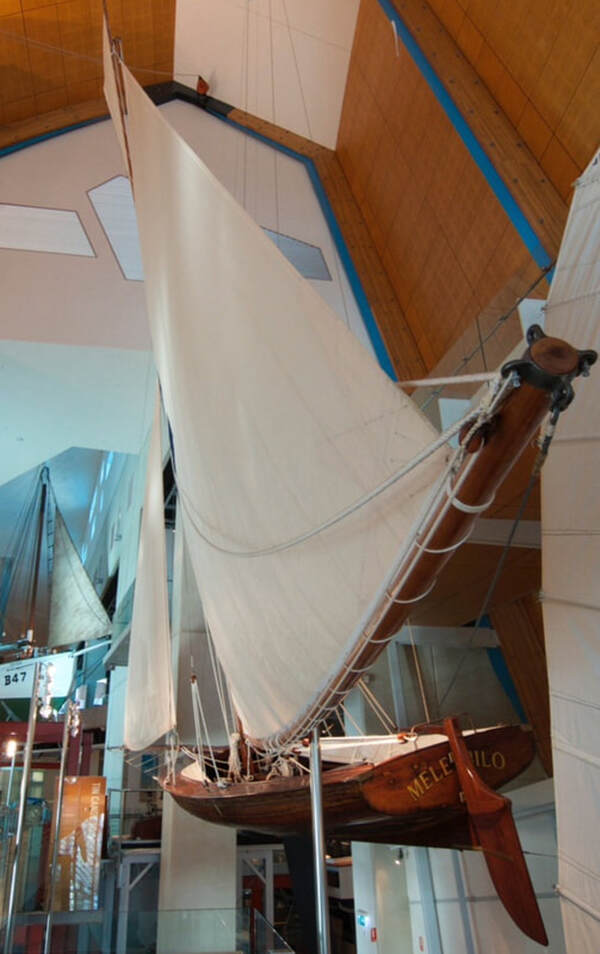
Mele Bilo II is on display at the Fremantle Maritime Museum. Photo Dave Lefroy.
There are several other 18’s still extant that we know of. Chris Webb III (1949) is in unrestored condition in storage at the Sydney Heritage Fleet. St George (1938) is still afloat converted to a small cabin yacht, having been sheathed in fibreglass. I’ve located another glassed hull that may be Ron Robinson’s first Ampol, which was a batten-seam boat he built as Scamp II in 1954.
Others survived for some time but didn’t make it to the present. Top Weight survived with the Sydney Heritage Fleet until it came into the hands of Grant Taylor around 2000 but it was too far gone to restore and he commissioned Rob Tearne to built the replica. Top Weight was broken up. Her stem has survived as a trophy at the SFS. Tangalooma survived in the care of the Brisbane Maritime Museum until after the replica was built, but had so deteriorated that it was broken up around 2000. Mississippi (1914) had been converted to a launch and survived until the 1990’s but was unfortunately broken up without documenting it. Her chainplates are on display at the SFS.
Burrawang (1936) had a second life as a workboat for Eaton’s timber yard in Berry’s Bay but has not been traced since that yard closed in the 1970’s. Myra IV survived as a training boat for a scout group until at least the 1960’s.
Several 16-footers have survived. The ANMM, Queensland Maritime Museum and Fremantle Maritime Museum each have a restored 16-footer on display. Sydney has Rival (1928), Brisbane has Fury (1937) and Fremantle has one of Jack Cassidy’s Evelyns. Wrightsons have one of Norman Wright’s 16-footers in storage and Bill Wright is in contact with someone in San Francisco who has one! 16-footer enthusiast the late Jack Ray had several 16-footers in his collection until around 2000 but the trail has gone cold.
Queensland Maritime Museum has two 12-footers and Sydney Heritage fleet has 3, as well as a Botany Bay 10-footer (a small class that had smaller boats than the Balmain 10’s).
The AHSSA is still on the lookout for any others that may emerge.
The AHSSA is still on the lookout for any others that may emerge.
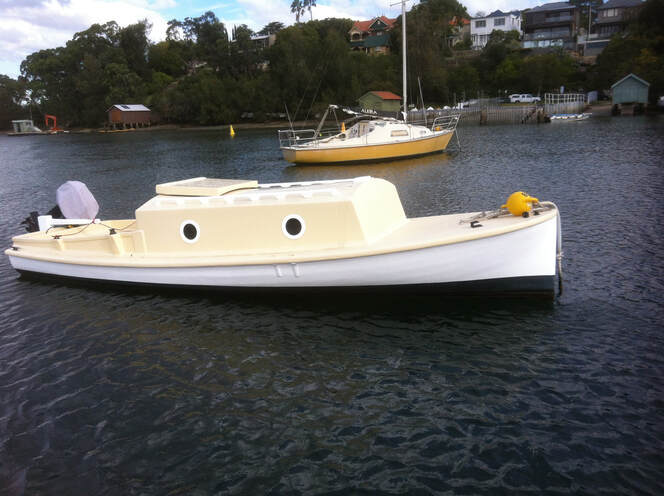
St George (1938, later Gloria) survived converted to a small yacht. Photo Ian Smith
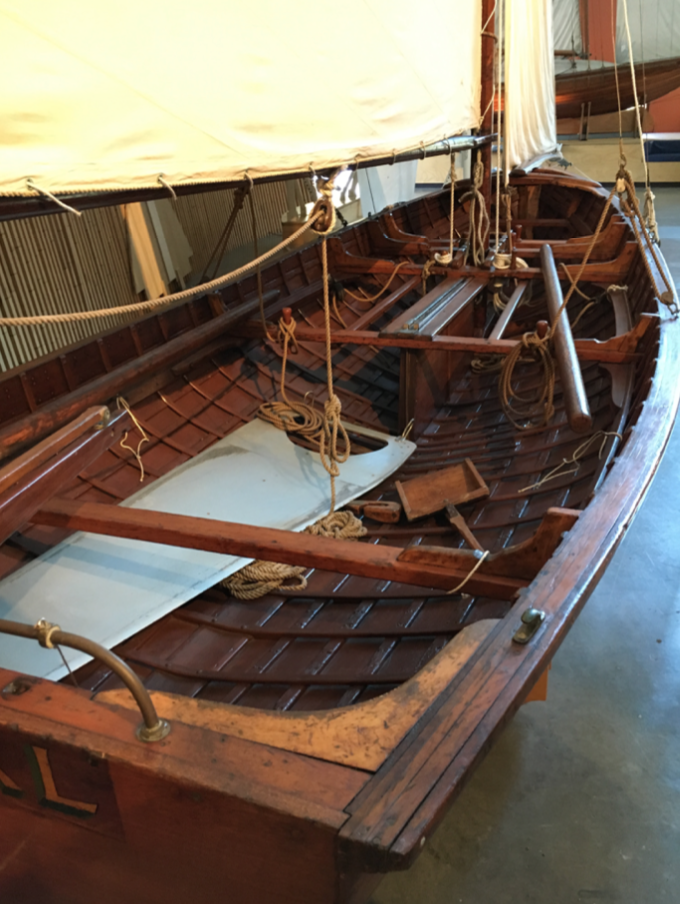
Darkie Griffin’s 1928 16-footer Rival is on display at Wharf 7 Darling Harbour alongside Britannia and Yendys. Photo Ian Smith
